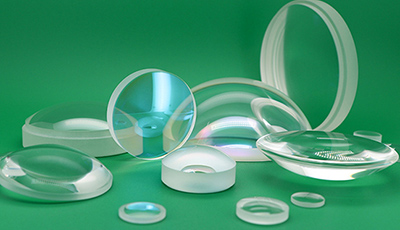What are filters? What are the applications?
Mar. 15, 2024
Optical filters are devices that selectively transmit light of different wavelengths, usually in the optical path as flat glass or plastic devices that are colored or have an interference coating. The optical properties of the filters are fully characterized by their frequency response, which specifies the modification of the amplitude and phase of each frequency component of the input signal by the filter.
Filters selectively transmit light in a specific wavelength range, i.e. different colors, while blocking the rest of the light wave. They can typically pass only long wavelengths (long pass), short wavelengths (short pass), or wavelength bands, blocking longer and shorter wavelengths (bandpass). The passband can be narrower or wider; the turn between max and min wave peaks can be sharp or flat.
Filters are commonly used in photography (where certain special effect filters as well as absorption filters are occasionally used), in many optical instruments, and in colored stage lighting. In astronomy, optical filters are used to limit the transmission of light in the spectral band of interest, and filters are also necessary for fluorescence applications such as fluorescence microscopy and fluorescence spectroscopy.
Classification of Filters
They can be made in a variety of ways. Filters are one of them. Filters can also be made from gases or solutions. Filter for the commonly used filters, according to the spectral characteristics are divided into passband filters and cutoff filters; spectral analysis is divided into absorption filters and interference filters. It is mainly used as an auxiliary dispersion, such as in the grating spectrometer used as a spectral level separator, to eliminate low-level spectral overlap. Monochromators using interference filters can be separated from a very narrow range of wavelengths.
-Absorption filter
Absorption filters are usually made of glass to which various inorganic or organic compounds have been added. These compounds absorb some wavelengths of light and transmit others. Compounds can also be added to plastics (usually polycarbonate or acrylic) to produce gel filters, which are lighter and less expensive than glass-based filters.
-Dichroic filters (interference filters)
Dichroic filters (also known as "reflective" or "thin-film" or "interference" filters) can be manufactured by coating a glass substrate with a series of optical coatings.
Dichroic filters usually reflect the unwanted portion of light and transmit the remaining portion. Dichroic filters use the principle of interference. Their layers form a continuous series of reflective cavities resonant with the desired wavelength. When peaks and valleys overlap, other wavelengths are destructively eliminated or reflected.
Dichroic filters are particularly well suited for precise scientific work because their precise color range can be controlled by the thickness and sequence of coatings. They are usually much more expensive and more delicate than absorption filters. They can be used in devices such as the dichroic prisms of cameras to separate light beams into components of different colors.
-Bandpass filter
A bandpass filter transmits only a certain band of wavelengths and blocks other wavelength bands. The width of such a filter is expressed as the range of wavelengths through which it is allowed to pass, and can be any value from much less than Å to several hundred nanometers. Such filters can be made by combining LP filters and SP filters. Examples of bandpass filters are the Lyot filter and the Fabry-Pérot interferometer. These two filters can also be made tunable, allowing the center wavelength to be selected by the user. Bandpass filters are commonly used in astronomy to facilitate the observation of spectral lines that one wants to correlate.
-Short-pass filter
A short-pass (SP) filter is an optical interference or tinted glass filter that attenuates longer wavelengths and transmits (passes through) shorter wavelengths in the effective range of the target spectrum (usually the ultraviolet and visible regions). In fluorescence microscopy, short-pass filters are often used in dichroic and excitation filters.
-Long-pass filter
Long-pass (LP) filters are optical interference or colored glass filters that attenuate shorter wavelengths and transmit (pass) longer wavelengths over the effective range of the target spectrum (ultraviolet, visible, or infrared). In fluorescence microscopy, long-pass filters are often used in dichroic and blocking (emission) filters.

CLZ Optical Co., Ltd. has been manufacturing and trading optical components for many years, Integration from design to production and sales, main products including optical domes, optical windows, optical prisms, optical filters, and so on, we also could provide customized service, With a variety of substrate materials, such as sapphire, fused silica, silicon, optical glass N-BK7, H-K9L.
Please contact us if you have any needs.


















